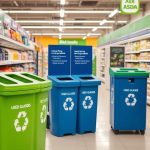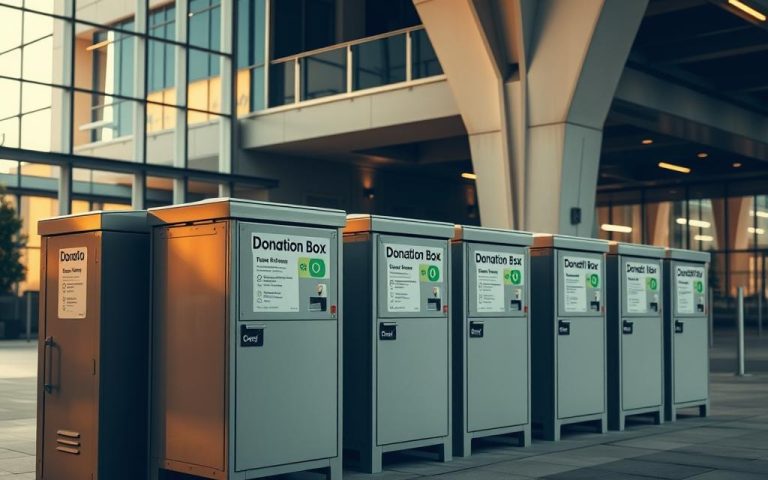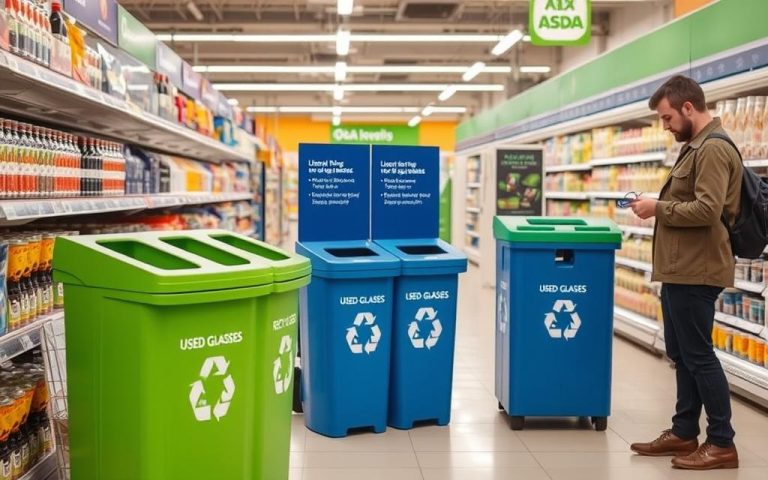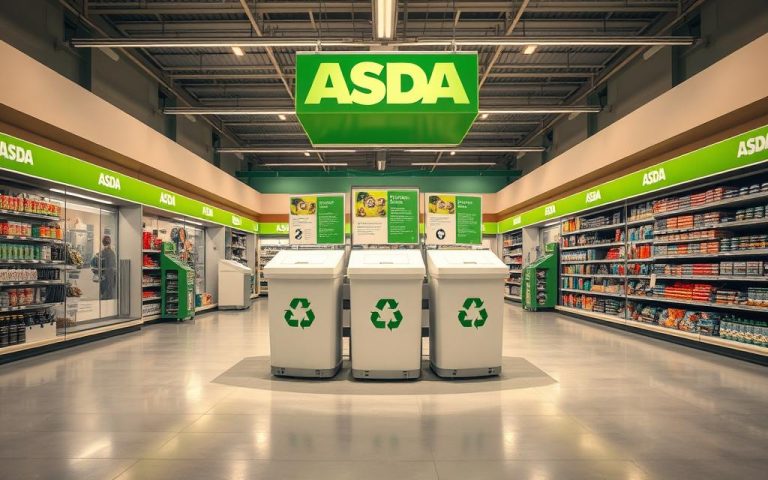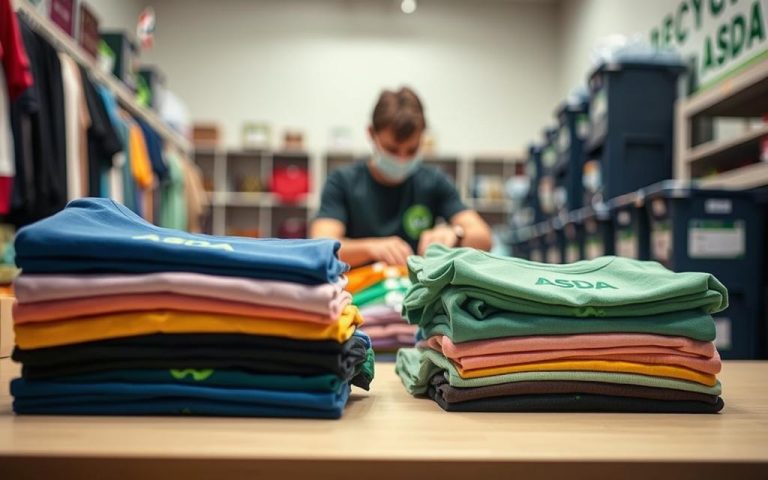How to Recycle Soft Plastics at ASDA
ASDA is leading the way in innovative packaging solutions that benefit both customers and the environment. By replacing traditional materials with flexible alternatives, the supermarket has significantly reduced its environmental footprint. For example, their new vacuum-sealed packaging for beef mince cuts plastic use by 60%, saving 67.6 tonnes annually.
This advanced technology not only extends shelf life but also saves fridge space, making it a win-win for households. ASDA has also made it easier for customers to contribute to sustainability efforts by offering over 250 in-store collection points nationwide.
These initiatives align with broader UK goals to reduce waste and improve the supply chain. ASDA’s commitment to eco-friendly practices reflects its dedication to creating a brighter future for all.
ASDA’s Commitment to Soft Plastic Recycling
The push for sustainable packaging is reshaping the retail industry. ASDA has taken significant steps to reduce its environmental impact through innovative solutions. One standout example is their vacuum-sealed beef mince packaging, which cuts material use by 60%. This method saves 67.6 tonnes plastic annually while extending shelf life.
ASDA’s efforts go beyond individual products. They’ve redesigned their plastic packaging across multiple lines, eliminating 120 tonnes of waste. For instance, the Just Essentials soft cheese lids now contain 30% recycled content. These changes are part of a broader strategy to meet the UK’s sustainability goals.
Reducing Plastic Waste with Innovative Packaging
ASDA’s focus on flexible plastic film has led to remarkable achievements. By removing colored milk caps, they’ve improved recyclability for 200 million pieces yearly. Additionally, their closed-loop system returns transport film to distribution centers for reuse. This approach minimizes waste in the supply chain and supports a circular economy.
ASDA’s Goal of 100% Recyclable Packaging by 2025
ASDA is committed to making all its packaging 100% recyclable by 2025. Currently, 96% of their packaging meets this standard, surpassing industry averages. This initiative aligns with Extended Producer Responsibility (EPR) legislation and reflects their dedication to environmental stewardship.
| Initiative | Annual Reduction |
|---|---|
| Vacuum-sealed beef mince | 67.6 tonnes |
| Removed colored milk caps | 200 million pieces |
| Beef product redesigns | 120 tonnes |
How to Participate in ASDA Soft Plastic Recycling
Recycling flexible materials has never been easier with ASDA’s accessible programs. With over 250 in-store collection points nationwide, customers can contribute to reducing waste effortlessly. These stations are conveniently located, making it simple to drop off everyday items like bread bags and crisp packets.
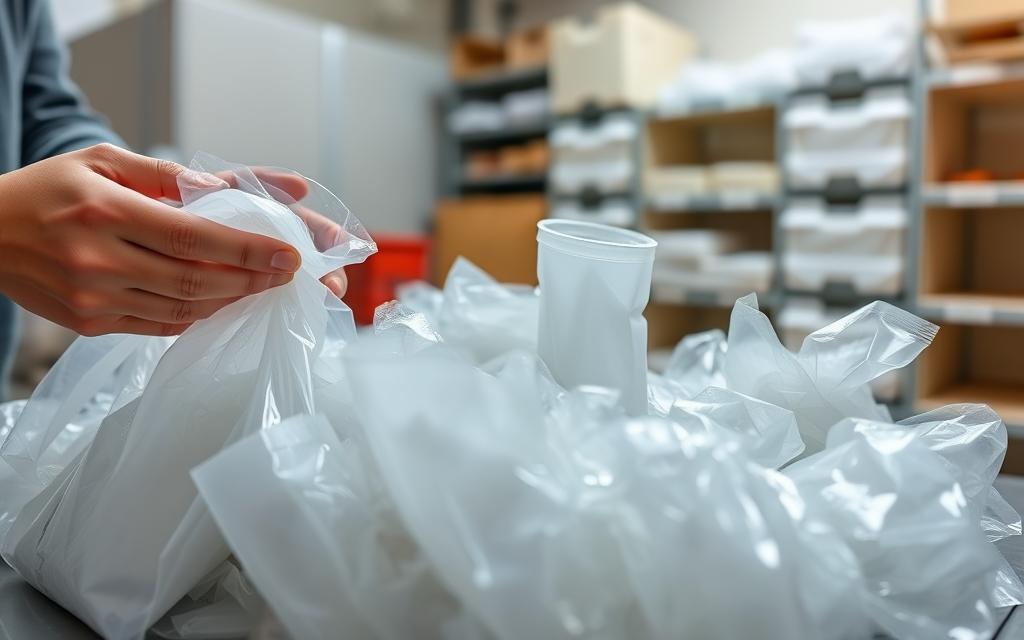
Locating ASDA’s In-Store Collection Points
Finding a collection point is straightforward. Most ASDA stores have dedicated recycling stations near the entrance or customer service areas. Look for clearly marked bins labeled for flexible materials. If you’re unsure, ask a store associate for assistance.
What Types of Flexible Materials Can Be Recycled?
ASDA accepts a wide range of clean, dry, and non-food-contaminated items. Here’s a quick list of accepted materials:
- Bread bags
- Frozen food wrappers
- Crisp packets
- Packaging from essentials like mince and beef products
Remember, only clean and dry materials are accepted. Contaminated items can disrupt the recycling process.
“Recycling flexible materials is a small step that makes a big difference. By participating, you’re helping to reduce waste and support a circular economy.”
Once collected, these materials are processed into new products like construction materials and refuse sacks. ASDA partners with leading recycling logistics companies to ensure efficient processing. This effort aligns with the UK’s goal of achieving a 47.3% recycling rate for flexible materials.
| Accepted Material | Preparation Requirements |
|---|---|
| Bread bags | Clean and dry |
| Frozen food wrappers | Free of food residue |
| Crisp packets | Empty and dry |
By participating in ASDA’s recycling program, you’re not only reducing waste but also supporting innovative solutions for a greener future. Join the movement today and make a difference!
ASDA’s Broader Sustainability Initiatives
Sustainability is at the core of modern retail strategies, and ASDA is no exception. The company is making significant strides in reducing its environmental impact across its operations. From innovative packaging solutions to partnerships with industry leaders, ASDA is setting a benchmark for eco-friendly practices.
Reducing Plastic Supply Chain Footprint
ASDA is tackling the challenges of the plastic supply chain head-on. One notable initiative is the reuse of transport film in distribution networks. This closed-loop system ensures that materials are repurposed, reducing waste and cutting costs. Additionally, the company has partnered with Plastic Energy to convert collected flexible plastics into pyrolysis oil, a resource for new products.
Another key effort involves the redesign of packaging for essentials like cheese lids. Over 1.8 million lids now contain 30% recycled material, significantly reducing the need for virgin plastic. These changes are part of ASDA’s commitment to aligning with the UK Plastics Pact’s 70% recycling target by 2025.
Extending Shelf Life with Eco-Friendly Packaging
Innovative packaging is not just about reducing waste—it’s also about improving functionality. ASDA’s eco-friendly solutions extend the shelf life of products, ensuring fresher food for longer. For example, vacuum-sealed packaging for beef mince not only cuts plastic use by 60% but also keeps products fresh for extended periods.
ASDA is also testing eco-board production from collected flexible plastics. This material can be used for secondary packaging, further reducing the company’s reliance on traditional materials. By focusing on both sustainability and practicality, ASDA is leading the way in the retail industry.
“Sustainability is not just a goal—it’s a responsibility. Every step we take brings us closer to a greener future.”
These initiatives highlight ASDA’s dedication to reducing its environmental footprint while meeting consumer needs. By embracing innovative solutions and fostering industry partnerships, the company is paving the way for a more sustainable future.
Conclusion: Join ASDA in Building a Greener Future
Small changes at home can lead to big impacts for the planet. With 85% of UK consumers concerned about waste, it’s clear that action is needed. Supermarkets are stepping up, and you can too by participating in store programs that make a difference.
Supporting Extended Producer Responsibility legislation is crucial. This ensures industries take accountability for their environmental footprint. Upcoming kerbside collection improvements will make it even easier to contribute.
Share your recycling successes on social media to inspire others. Every effort counts toward corporate sustainability targets. For more ways to advocate for change, explore resources on reducing waste.
Together, we can create a greener future. Join the movement today and make your impact!
FAQ
How can I recycle flexible packaging at ASDA?
You can drop off items like film and bags at designated in-store collection points. These materials are then processed into new products, reducing waste.
What types of flexible materials are accepted for recycling?
Accepted items include food wrappers, bags, and film. Ensure they are clean and dry before dropping them off at the collection points.
What is ASDA doing to reduce its environmental impact?
The supermarket is working towards 100% recyclable packaging by 2025. They are also innovating with eco-friendly solutions to extend product shelf life and minimize waste.
Where can I find ASDA’s in-store collection points?
Look for clearly marked bins near the entrance or checkout areas in your local store. These are dedicated to collecting flexible materials for recycling.
How does ASDA’s packaging innovation benefit customers?
By using recyclable and sustainable materials, ASDA ensures products like beef mince stay fresh longer while reducing the overall environmental footprint.
What are ASDA’s broader sustainability goals?
Beyond recycling, ASDA focuses on reducing its supply chain footprint and implementing changes that promote a greener future for the food industry.




